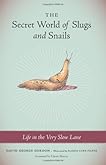 How I Killed Pluto and Why It Had It Coming by Mike Brown
How I Killed Pluto and Why It Had It Coming by Mike BrownMy rating: 5 of 5 stars
Mike Brown is a fluent storyteller and a scrupulous scientist, whose insistence on a high standard of proof led to him nearly losing the credit for one of his discoveries. Who would think such skulduggery exists in the community of astronomers?
As a boy, Brown discovered his passion for planets when he noticed two moving, night after night, through the constellation Orion. "It's always hard not to feel that in some ways, for me at least, maybe the early astrologers were right: Perhaps my fate actually was determined by the position of the planets at the moment of my birth."
As he recounts the discovery of Pluto, and his own role in the wildly unpopular decision to decertify it as a planet, he describes his exploration of the cosmic ocean, wherein asteroids are "schools of minnows swimming among a pod of whales. Planets were the whales of the solar system." When the Kuiper Belt was discovered, he says, "Pluto and the Kuiper Belt were simply a previously overlooked collection of sardines swimming in a faraway sea."
The boy's interest in celestial motion grew into the man's quest to discover new objects in the relatively-unexplored area beyond Pluto. His tools ranged from an archive of photos from older telescopes that had imaged wide swaths of sky to the newest digital technology in telescopes and data manipulation. The wider images were more likely to include artifacts from the process of creating glass plates, while the precision of digital imagery was offset by the relatively small expanse of sky that could fit in one image.
His first discovery, named Quaoar, was "a big icy nail in the coffin of Pluto as a planet." Only slightly smaller than Pluto, the chunk of icy methane was bound to be the first of many objects that would be larger than Pluto. Along the course of his discoveries he found Sedna (named for an Inuit goddess of the sea), Haumea (Hawaiian goddess of childbirth), Xena (with her satellite, Gabrielle!), and many other intriguing objects that began to fill in some of the creation story of the solar system.
He also found the aforementioned skulduggery: an Italian astronomer, who cyber-stalked his use of telescopes while he was tracking Xena, and tried to claim credit for the discovery, earning Keith Olbermann's dreaded soubriquet, "Worst Person in the World." The committee in charge of the naming conventions for new objects in the solar system were not always happy with the names he chose. (Personally, I wish that some of his working names could have been kept. It would have been delightful to know that an object named Easterbunny hopped through the heavens.)
What is a planet? Must it be spherical? A certain size? A stint of teaching geology gave Brown a glimpse into the problems that exist in other disciplines. What is a continent? A big, coherent piece of land? How big? (In fact, he learned, some Europeans do not consider Australia a continent, Argentina teaches that North and South America are one continent, and New Zealand is on its own continental plate...)
Ultimately, Pluto, "everyone's favorite runt planet," was reclassified (along with newcomers Xena and Ceres) as a "dwarf planet." Brown calls the new rules "a slew of unscientific clutter," but agrees with the decision that continues to make Pluto lovers unhappy.
One day in 2004, he took time out from staring at large computer screens and looking for new and distant objects to look at a smaller screen: a sonogram of his daughter. "Hey," he said, "It looks like the Venera lander pictures of the surface of Venus." "You're insane," replied his wife.
"That night," he writes, "as the clock struck twelve, my five-year bet [with a colleague] came to an end. I lost the bet, but I didn't feel so bad. Instead of seeing the end of the solar system, I saw that everything was just beginning."
I loved every page of this book and recommend it to anyone who has ever looked at the night sky.
View all my reviews



